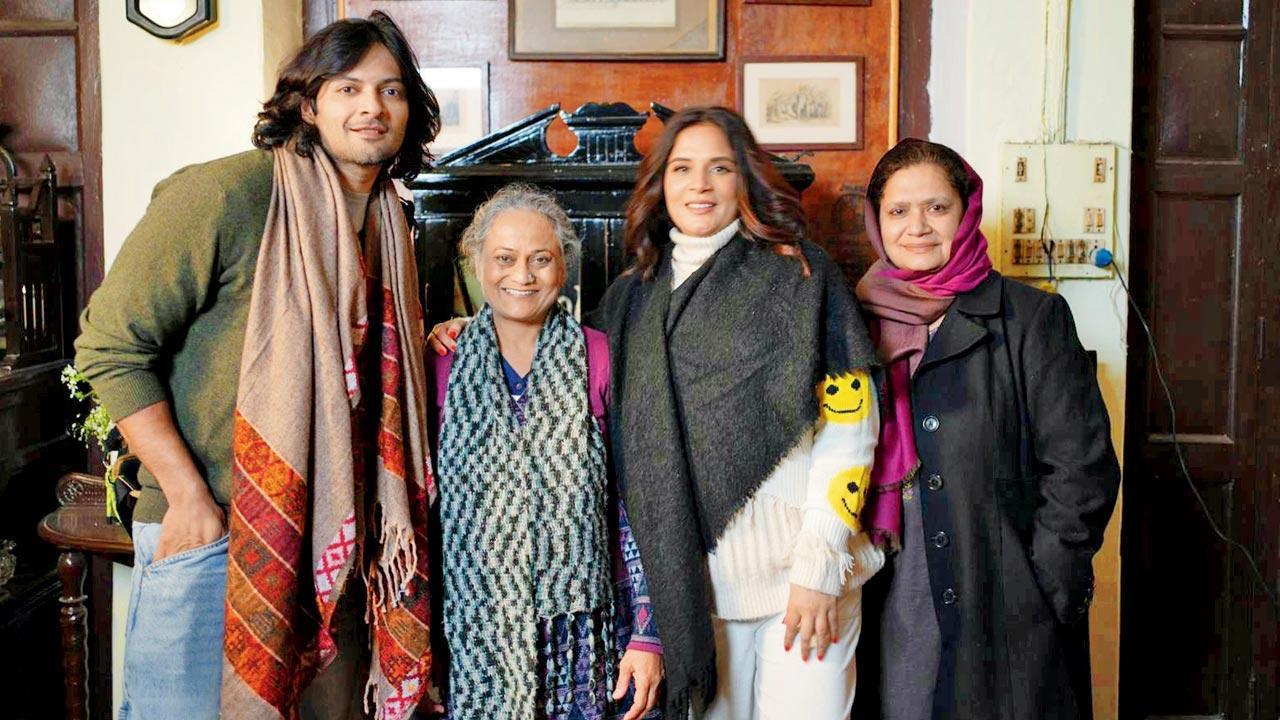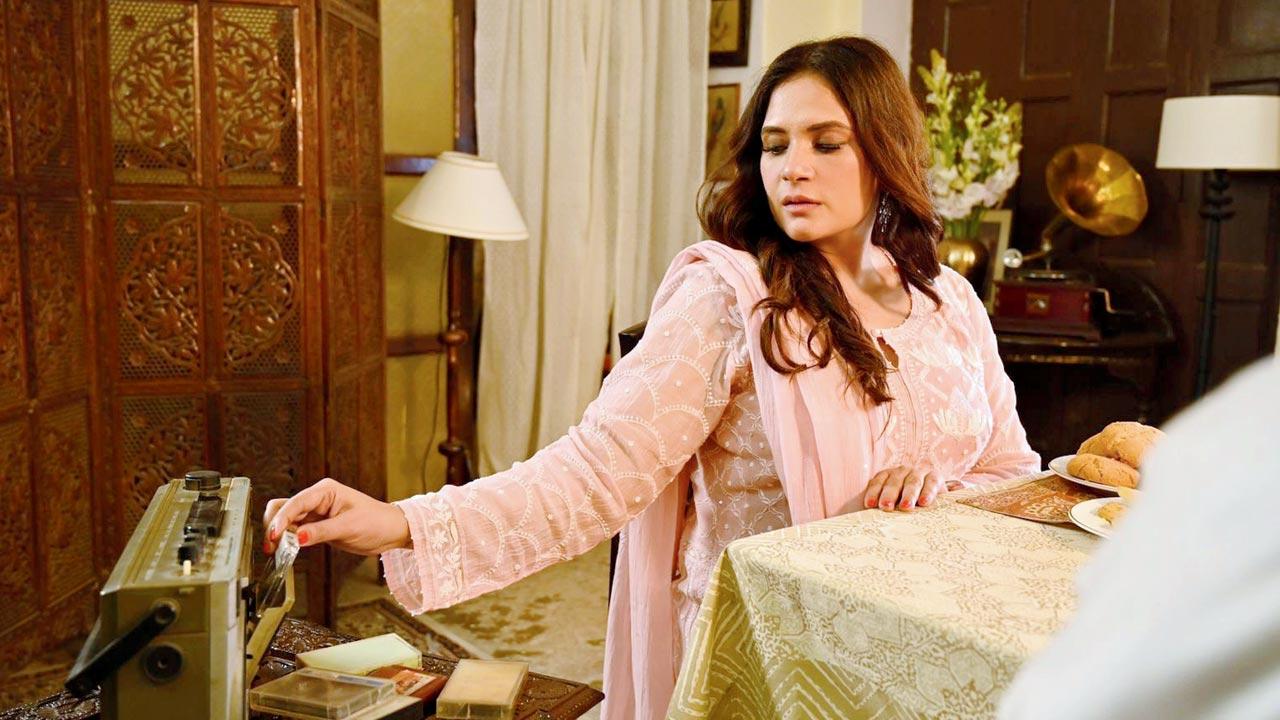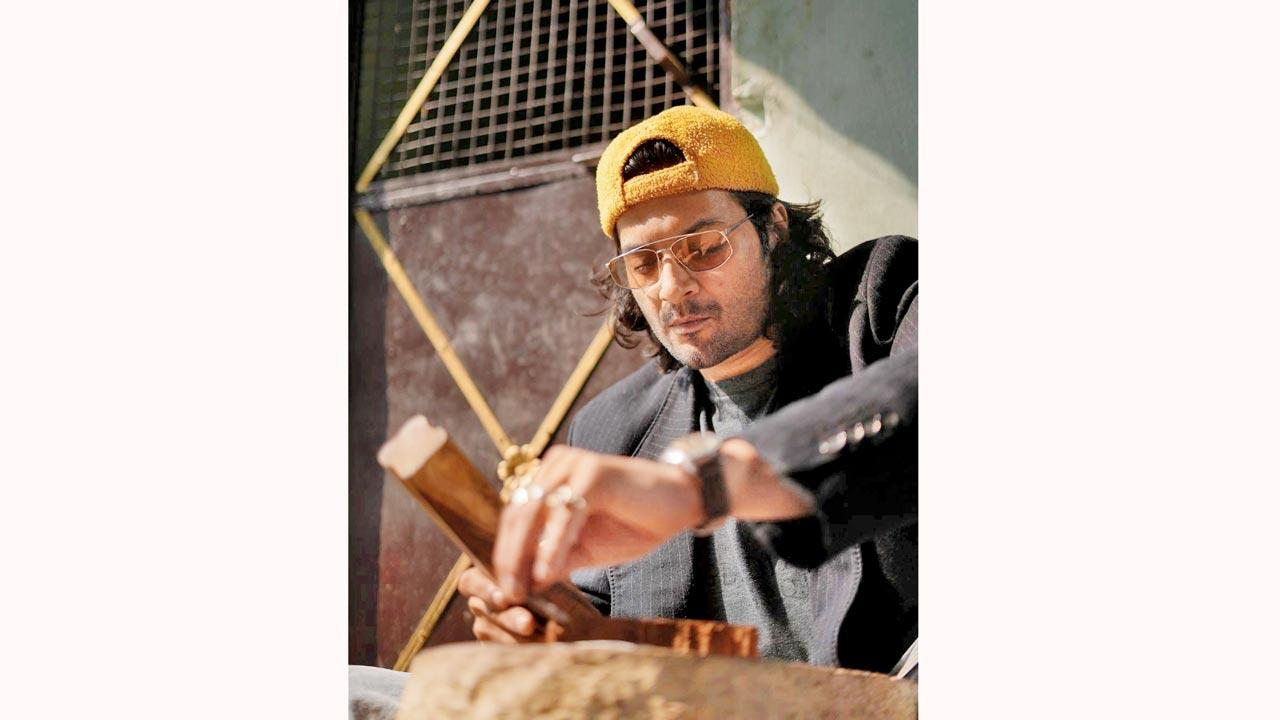Actor-producer and newly turned fashion entrepreneur Richa Chadha and designer Yasmin Saeed chit-chat all things Chikan with mid-day

Ali Fazal, Nivedita Bhargava, who is in the campaign, Richa Chadha and Yasmin Saeed
For actors and producers Richa Chadha and Ali Fazal, 2024 is a year of more than one new beginning. The couple is expecting their first child; Chadha is looking forward to next week’s release—Sanjay Leela Bhansali’s Heeramandi, and the two have turned fashion entrepreneurs for the first time. It was appropriate that their new Chikankari apparel label, Ehaab, which launched in collaboration with designer Yasmin Saeed, was announced on World Artisan Day, April 18.
The label gets its name from the Arabic word for the art of gifting, and lists creating regular employment for women involved in the heritage needle art of Lucknowi Chikan work, as its priority. Lucknow is Fazal’s and Saeed’s hometown. It’s here that she runs her wedding trousseau label, working with a variety of embroiderers, including Lucknowi Chikankari artisans. Chikankari was traditionally done on fine muslin, but recently, also increasingly on georgette, chiffon and organza. It involves making intricate floral and avian patterns in white on a white or coloured base. The craft, say experts, includes more than 30 stitches including the chain, hem and backstitch. Cheap machine-made “China Chikan” is flooding the markets of Lucknow, offering rip-offs at one-third the price, making an effort such as this is worthy of note.
 Richa Chadha models a Chikankari creation
Richa Chadha models a Chikankari creation
“I don’t want to take undue credit for this label; it’s very close to Ali [his heart],” Chadha politely announces as we get into a conversation with her and Saeed.
Edited excerpts from the interview.
Richa Chadha: I have always been a history junkie… history honours student from St. Stephen’s College. I like to learn how things develop and travel. I got deeply interested in Chikankari after marrying Ali, seeing how he and people like Yasmin ji cherish this heritage craft. Unfortunately, there is scant documentation around it that is accessible to the common person. I learnt what I could from our conversations with locals and a book by Italian author Paola Manfredi. The Mughal emperors didn’t just introduce Chikankari in the 16th century; it developed here over generations, becoming what we see of it today. The royals and the nobility were patrons of the arts, and one of the stories surrounding its rise in popularity involves emperor Jehangir’s wife Nur Jahan, who was known for her love for embroidery. She is said to have had this idea of embroidering white on white, almost to appear translucent. After the decline of the Mughal courts, Chikankari flourished under the Nawabs of Awadh, who were patrons to several embroiderers who made Lucknow their home, and the finest Chikankari then began to emerge from here.
The biggest names in international couture come here to get embroidery done. With the fall of the Awadh nawabs and the growing British influence, Chikankari travelled to Bengal, where world-famous Dhaka muslin had been historically sourced even before the advent of the British, and a version [of Chikankari] was said to have been practised. Rajasthani miniature paintings reflect this craft too. I don’t believe that there is clarity on the chronology of the origin and rise of the craft. It’s so old that some of the stitches are no longer used. Tell us about these stitches, Yasmin ji.
 Ali Fazal tries his hand at wood block making
Ali Fazal tries his hand at wood block making
Yasmin Saeed: There’s jaal work…
RC: Like you see in architecture?
YS: Yes. There is the maahi jaal, murri, bakhiya, which creates a shadow; there is the ghaaspati and hool. We are keen to research the extinct stitches and train artisans in using them once again. Chikankari is mixed with other embroidery styles like zari, cutdana, beads and pearls. To stay true to its translucent, breathable nature, we use linen and cotton. The embroidery is hand done by women in their own homes. It can take between three months to a year to finish a complex piece… the stitches are so intricate. Because the artisans are mainly women, they juggle the art with housework and raising children.
Fabrics sometimes come back with masala stains, but sab dhul jata hai (smiles). We are working on setting up our own unit soon.
RC: It’s so that the artisans have a secure and permanent place of work. During the COVID-induced lockdown, when artisans ran out of work, Yasmin ji didn’t fire her karigars. She decided to create more employment to fight the machine-made Chikankari market and keep the craft and the community alive. We have deliberated on the pricing of our ensembles; we don’t intend to make it a luxury buy. Our goal is to sustain the business so that we can empower the women with hand skills. Cheaper, machine-made versions, you can tell, by the neat rear of the fabric. It’s flat; hand embroidery will have an embossed feel.
YS: The biggest challenge we face in continuing a business rooted in handmade Chikankari is that you have to deal with lag of time. I first decide on the pattern, do the chappai [printing] on the fabric. The women then take it home and work on the piece. Once back, the pieces are sent to my unit of tailors, and embroiderers who embellish it with zardozi work and other add-ons. The craft is as delicate as its history.
 Subscribe today by clicking the link and stay updated with the latest news!" Click here!
Subscribe today by clicking the link and stay updated with the latest news!" Click here!










